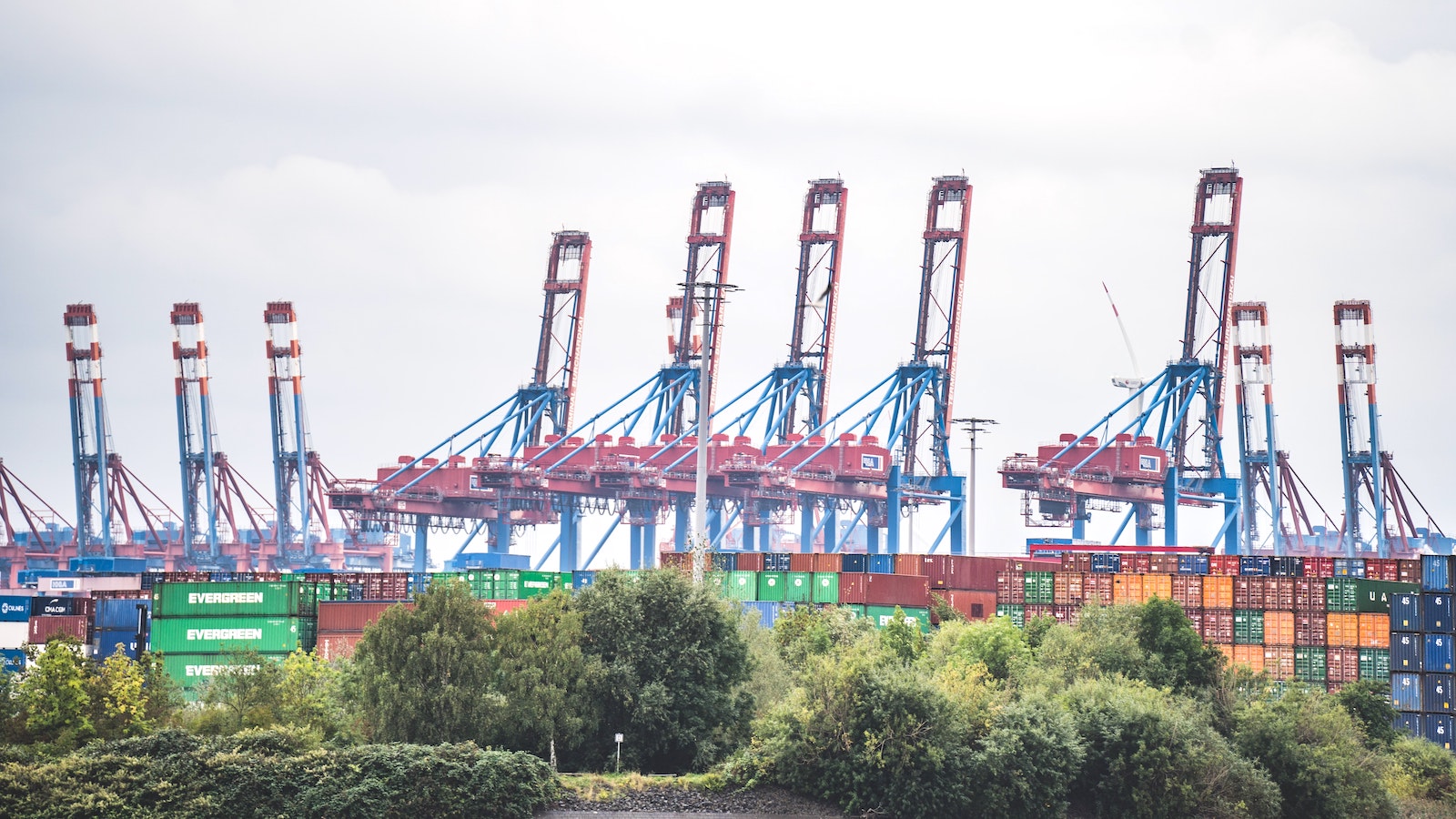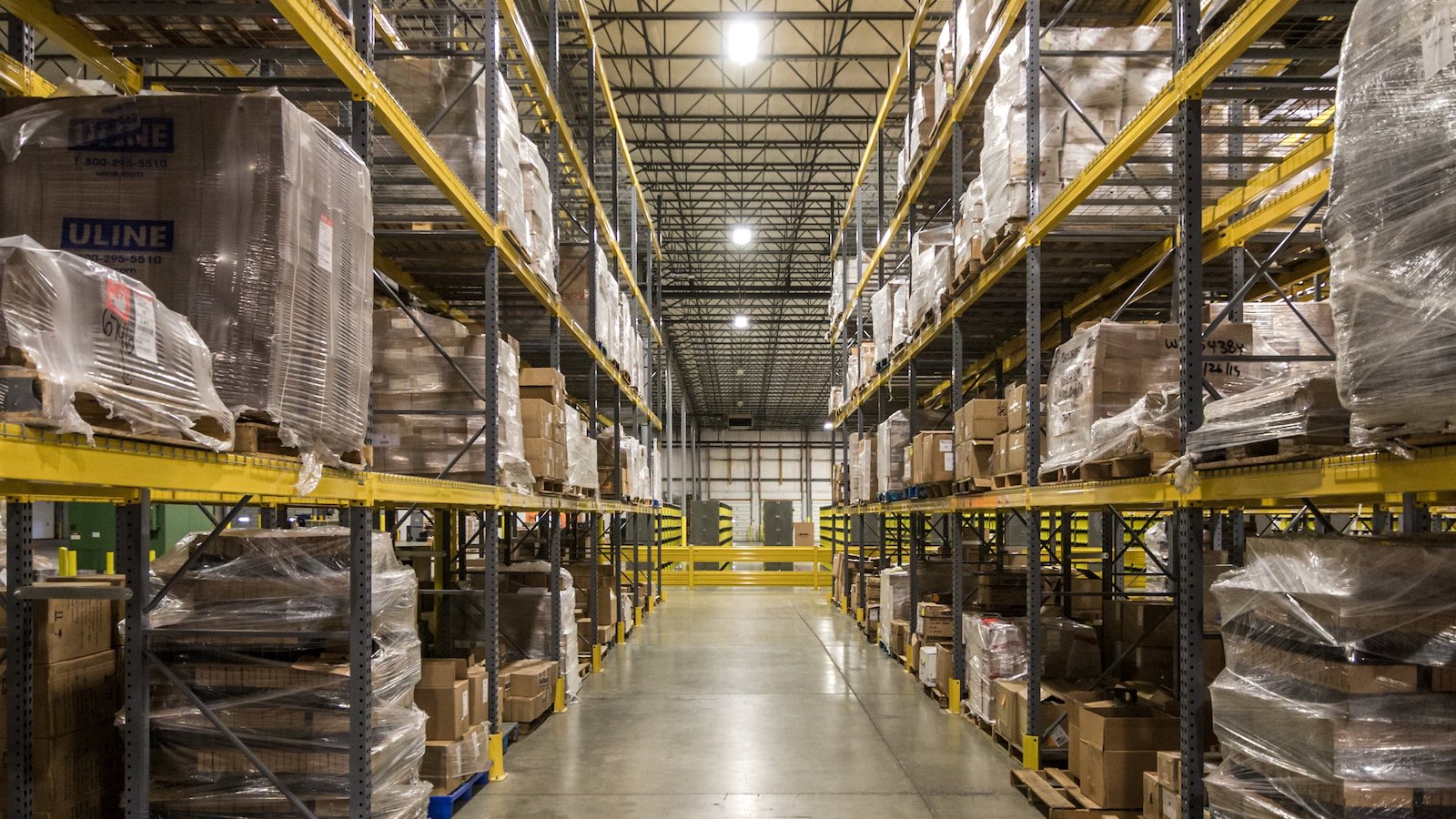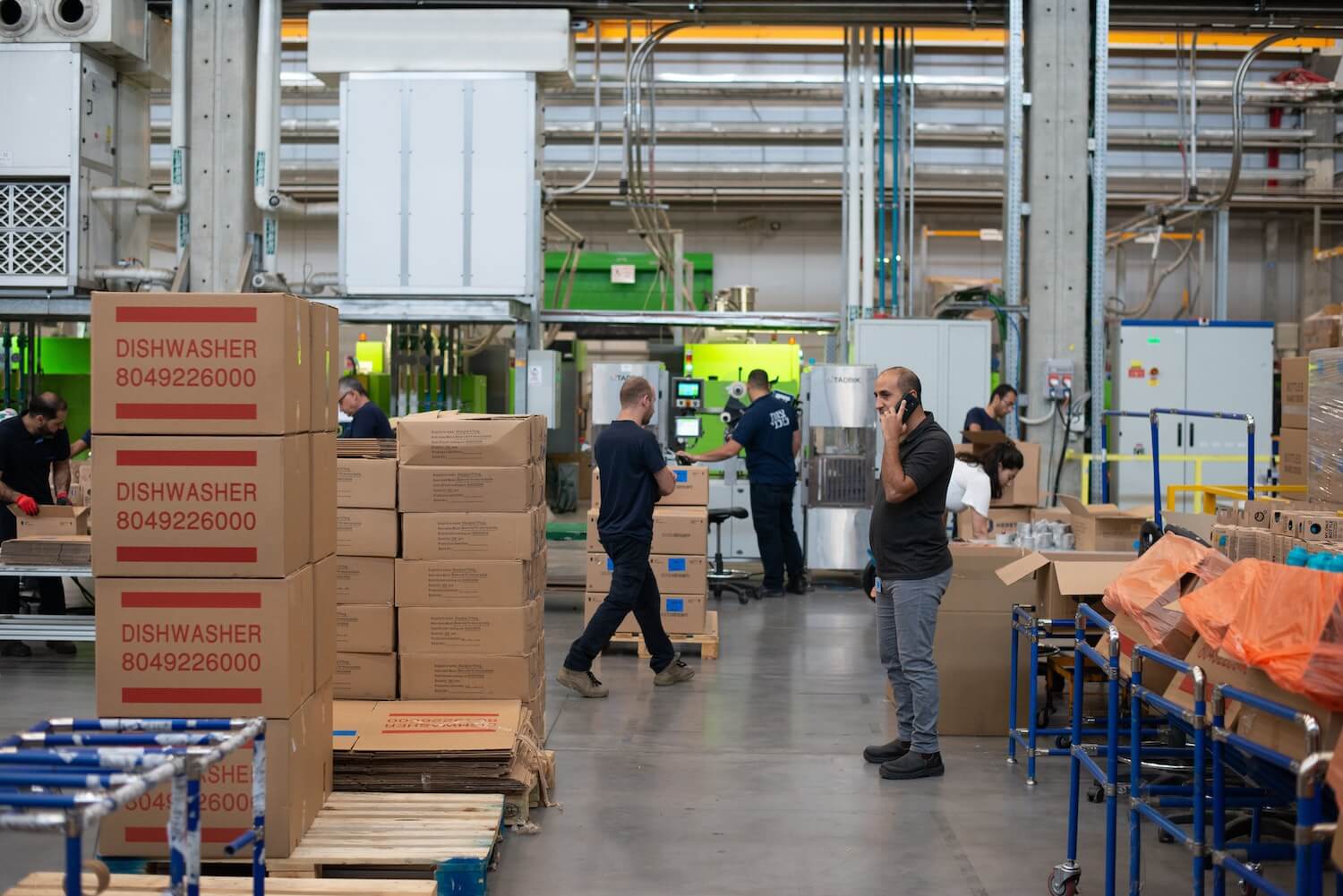Table of Contents
** Minutes
What is supply chain velocity?
Importance of supply chain velocity in today’s world
Roadblocks to achieving velocity
Tips for achieving supply chain velocity
Elements of well-optimised supply chains reaching velocity
In the ecommerce industry, speed is the name of the game. Customers expect to receive accurate orders fast — but quick last-mile logistics alone are not enough to keep up with this expectation.
To consistently provide the swift delivery that customers want, a retailer’s entire supply chain must move at a high velocity.
Maintaining a high supply chain velocity has many benefits. Not only can increased supply chain velocity improve customer satisfaction, speeding up supply chain processes can also reduce shipping times and costs, create a better inventory tracking system, and make your operations more lean and cost-effective.
In this article, we will discuss what supply chain velocity is, why it’s important for retailers, how you can increase supply chain velocity, and how a 3PL like ShipBob can transform the retailer experience for customers.
What is supply chain velocity?
Supply chain velocity refers to the speed at which activities within the supply chain are completed, as well as the speed at which orders move through the supply chain, from processing to arrival on the customer’s doorstep.
Supply chain velocity takes into account the speed of every supply chain phase and process, including purchasing from a manufacturer, production lead times, warehouse receiving, inventory management, order processing, picking, packing, shipping, and last-mile logistics.
High supply chain velocity shortens order cycle time, minimises lead times, and streamlines supply chain processes. Overall, high supply chain velocity means that customers receive orders with relatively little turnaround time between order placement and delivery.
Importance of supply chain velocity in today’s world
Having high supply chain velocity is both a competitive advantage for your business and a vital necessity for its longevity. Here are just a few of the reasons why a healthy supply chain velocity matters for business owners.
1. Increases customer satisfaction, brand loyalty, and repeat purchases
As mentioned above, online shoppers today want their orders delivered to them quickly. According to one study, 67% of shoppers expect 2-day delivery, and 46% of consumers value fast delivery more since the COVID-19 pandemic began.
This need for speed hugely impacts a consumer’s decision to buy (with 85% of shoppers saying they are more likely to buy when 2-day delivery is offered), as well as customer satisfaction levels.
If your supply chain runs smoothly enough to get finished goods into a customer’s hands in 2 days, that customer will be more likely to recommend your business, leave positive reviews, and purchase from you again — all of which build brand loyalty and ultimately bolster your business’s bottom line.
2. Boosts profitability & cost-savings
On the sales front, being able to quickly move products along the supply chain can result in more sales and higher revenues.
Internally, more streamlined and efficient supply chain processes almost always decrease operating and labour costs, and get more work done in the same amount of time. Saving money on operations helps small businesses increase their profits, or allocate additional funds elsewhere.
3. Prepares operations for unexpected challenges
An agile supply chain — one with a quick order turnaround time and lean operations — is more adaptable than a sluggish supply chain. This means that, in the face of variability, high velocity supply chains are easily transformed to circumvent threats and take advantage of opportunities.
If your supply chain is strong enough to support high velocity operations, it usually also has enough supply chain resilience to withstand unforeseen delays or roadblocks.
Roadblocks to achieving velocity
With unexpected global supply chain crises and a growing focus on supply chain sustainability, achieving velocity is easier said than done.
Every business will face supply chain challenges eventually, but many of these challenges are surmountable if you prepare for them. Here are a few common challenges that businesses encounter in their supply chain management.
Supply chain disruptions
Supply chain disruptions can occur at any time, and recent events have demonstrated just how intensely and acutely they can impact the supply chain. Whether it is an isolated incident, such as the Suez Canal blockage, or a prolonged global supply chain disaster like the COVID-19 pandemic, disruptions make it difficult to maintain supply chain velocity.
Even with a lean supply chain, unforeseen disasters can stop goods or orders from moving through your pipeline, with delays in one stage affecting the entire supply chain.
Infrastructure/inventory shortages
Shortages cause bottlenecks, making it difficult to maintain supply chain velocity when a particular resource runs out.
Lack of available warehousing space, a freight container shortage that causes freight forwarder pricing to spike, limited raw materials, or insufficient buffer inventory, and other shortages cause product flow to grind to a halt and force businesses to spend valuable time and resources finding creative solutions.
Growing demand
Increased customer demand for your new products is every business’s dream — but growing demand becomes a problem when it outpaces your operation’s capacity to keep up.
If there is an unexpected run on your products, you could easily burn through your safety stock and experience stockouts and backorders before replenishment. These issues damper your business’s success, cause you to miss out on potential profit, and might even discourage customers from returning.
Holidays and busy seasons
Even the most streamlined supply chains experience predictable delays and shortages around certain holidays and seasons. Because of the increase in order volumes and labour needs, it can be difficult to keep supply chain velocity high around the winter holidays — at least in the US.
Many businesses also fail to take foreign holidays (such as the Chinese New Year Shutdown) into account, causing further delays and supply chain disruptions.
Tips for achieving supply chain velocity
With so many moving parts in a supply chain, it can be difficult for business owners to know how to increase their supply chain’s velocity, or where to target optimisation efforts. Here are a few best practices that your business can implement to improve your supply chain velocity.
Use your data to forecast demand
Anticipating future demand is essential to preparing your supply chain ahead of time and ensuring that you’re timing replenishment to meet customer needs.
While you can’t predict the future with 100% accuracy, historical sales data is the best tool in your arsenal for demand forecasting. By tracking what sells when and where over time, you can begin to plot trends that will help you better time purchase orders, prepare for busy seasons, improve decision making, avoid stockouts or overstocking, and keep everything running smoothly.
Audit your suppliers & distribution partners
Third-party partners such as suppliers and distributors play a vital role in supply chain velocity. Good supply chain management involves effectively coordinating with all relevant parties to ensure a seamless operation.
So it’s important that you take a fresh look at your suppliers and partners to see which of them are underperforming (and therefore need to be replaced) and which are adding a lot of value and increasing supply chain velocity (and with which you should cultivate stronger relationships).
Upgrade your tech stacks
Having outdated technology — or worse yet, managing everything by hand — is a sure-fire way to slow information flows to a crawl. On the other hand, the right technology can significantly improve velocity by enhancing supply chain collabouration, control, and efficiency.
Consider investing in updated and intuitive technology platforms with built-in capabilities such as order management, inventory management, and data and analytics. This provides supply chain visibility, allowing you to identify and resolve problems or bottlenecks quickly.
To further streamline operations, utilise supply chain technology that will help you automate different aspects of your operations, make accurate demand forecasts, and provide suggestions on improving delivery times.
Have backup plans for possible disruptions or changes
A resilient and agile supply chain has contingency plans. Supply chain planning allows you to prepare for disasters so that, if they do come, your supply chain velocity is able to bounce back quickly.
While there are some challenges you cannot prepare for, there are some material steps you can take to strengthen your supply chain so that it can maintain its velocity:
- Look for suppliers, distributors, and labourers who can provide immediate relief when you need it.
- Create omnichannel contingency plans.
- Always hold safety stock, and distribute inventory between multiple fulfilment and distribution centres to prevent losing all inventory.
- Partner with a 3PL that can withstand disruptions with a wide network of shipping couriers.
- Install backup servers to ensure better data security.
Respond immediately to increases in demand
You can also improve supply chain velocity with better demand management that involves immediately responding to increases in demand. A “demand pull” system is essential, as it involves “pulling” the product through the manufacturing process in a way that heavily depends on customer demand. This helps you reduce waste in the production process while enabling you to quickly respond to any spikes in demand.
Don’t drop the ball at the end of the supply chain
Many ecommerce retailers focus primarily on product sourcing, procurement, and/or production in their supply chain, as those are areas they often have less control over. While keeping a close eye on those functions is necessary, the latter half of the supply chain is equally as important.
Efficient warehouse management and order fulfilment processes can help you get products out the door faster and significantly improve velocity.
Picking, packing, and shipping must be quick and accurate to ensure customer satisfaction, packaging should create a unique unboxing experience, and last-mile shippers must be carefully selected to maintain supply chain velocity all the way to the customer’s doorstep.
For a more comprehensive approach, consider using supply chain as a service to speed up your inventory management, picking, packing, and shipping processes.
Lean on the experts
Working up supply chain velocity is challenging, and small businesses usually benefit from the industry knowledge of experts in the quest to achieve it. Outsourcing various parts of your supply chain management (such as warehousing, inventory storage, inventory management, order management, and order fulfilment) puts repetitive, complicated, or time-consumer functions into capable hands other than your own.
As these are the areas that are highly susceptible to disruptions, outsourcing them to experts will make it easier to achieve supply chain velocity.
Elements of well-optimised supply chains reaching velocity
While every supply chain has its idiosyncrasies, there are several key traits that high velocity supply chains tend to share. Here are some of the characteristics you’ll find in an efficient, optimised, and high velocity supply chain.
Streamlined and documented internal processes
High velocity supply chains have internal processes that are streamlined to work together seamlessly through optimisation. These processes are well-documented to maintain transparency and facilitate collabouration between all involved teams. This reduces confusion and miscommunication that could lead to delays, glitches, or backlogs within the supply chain.
Real-time supply chain visibility
Your team should be able to get real-time insight into any element of the supply chain, so that individuals can respond to issues right away.
Invest in technology and partnerships that enable you to monitor inventory levels, order volume, throughput for fulfilment and distribution centres, and warehouse efficiency minute-to-minute, and that provides key data and metrics at a glance.
With this level of visibility, you will have far more control over supply chain performance and can better optimise for speed.
“ShipBob’s analytics tool is really cool. It helps us a lot with planning inventory reorders, seeing when SKUs are going to run out, and we can even set up email notifications so that we’re alerted when a SKU has less than a certain quantity left. There is a lot of value in their technology.”
Oded Harth, CEO & Co-Founder of MDacne
Strong partner and supplier relationships
As an ecommerce business, you’ll almost always have to work with multiple third-party partners, including suppliers, distributors, shippers, and logistics service providers. This adds uncertainty to your supply chain, as any operational disruptions with one partner can significantly impact velocity.
While this is out of your control, building a strong relationship with your partners, suppliers, and other key stakeholders can give you the visibility you need to prepare ahead of time.
Businesses with high velocity supply chains usually develop mutually beneficial relationships with their suppliers and delivery partners. This encourages their partners to give them a heads up in case of any production shutdowns or delivery capacity restrictions that could disrupt the supply chain — and can even sometimes secure you discounts!
Ability to increase and decrease the flow of products quickly
Retailers that have achieved supply chain velocity are also able to quickly respond to changes in customer demand, and increase or decrease the flow of products as needed.
This enables them to maintain a lean supply chain to reduce waste in the production process, as well as minimise inventory obsoletion. At the same time, they’re able to quickly meet increased demand when customer needs arise.
“I followed the steps, told my manufacturer the requirements to ship inventory to ShipBob, and in a couple days I had 4,000 orders that were ready to ship out.”
Josh Hollings, Founder & CEO of Drop FX
On-time delivery of goods to customers
Ecommerce brands with optimised supply chains are able to follow through for customers, making sure that both inbound and outbound logistics are performed efficiently. Speedy back-end logistics processes certainly facilitate quicker delivery, but high-velocity brands pay extra attention to last-mile logistics to make sure that the customer receives the right package within the right time frame.
Getting customer orders out the door in under 2 days also helps you move inventory out of your warehouses or fulfilment centres so that it doesn’t pile up, take up extra space, or balloon holding costs that cut into profitability.
If your operations struggle to keep product flowing or deliver on time, outsourcing this aspect of your ecommerce operations to a reliable 3PL can help you achieve the velocity that you need to scale your business.
“Being with ShipBob this past Q4 went a lot better than most companies experienced. We know some brands still with our old 3PL who struggled a lot. For them, it would take 5-6 days to get orders fulfiled, and they had to cut holiday sales very early.”
Torii Rowe, COO & Co-Founder of MANSSION
Achieve supply chain velocity with ShipBob
At ShipBob, our team of logistics experts specializes in transforming supply chain velocity using industry best practices and strategies.
After connecting your online store to ShipBob, ShipBob’s automatic order processing assigns incoming orders to be fulfiled in the fulfilment centre closest to that order’s destination. With dozens of fulfilment centres across the country and multiple international locations, this drastically reduces shipping costs and times for merchants.
Every ShipBob fulfilment centre runs on the same warehouse management system, meaning that orders are fulfiled efficiently, accurately, and quickly everywhere. Our warehouses also employ extensive automation to further optimise operations, including automatic SKU reorder point notifications so that you always have time to replenish your inventory.
To speed up last-mile logistics, ShipBob empowers merchants to offer reliable and affordable 2-day shipping by negotiating bulk shipping discounts with carreirs, distributing inventory across the country, and utilising air and freight shipping.
Once your supply chain velocity improves, ShipBob helps you keep it high by offering you the tools & technology you need. ShipBob’s dashboard includes real time supply chain analytics to help you manage inventory, critical metrics available at a glance for full supply chain visibility, and historical sales data plotted over time to help you plan for the future.
With ShipBob to help you ramp up your supply chain velocity, you can focus on ramping up other important aspects of your business. Partnering with ShipBob allows you to speed up your supply chain velocity while maintaining order accuracy and quality, and frees up time and money to help you grow your business, fast.
Supply chain velocity FAQs
Here are answers to the most common questions about supply chain velocity.
What is velocity in supply chain management?
Velocity refers to the speed with which supply chain processes are completed, or at which customer orders and/or finished goods move through the supply chain.
How do you increase supply chain velocity?
You can increase supply chain velocity in your business by auditing your existing partners, accurately forecasting demand, using advanced technology, having backup plans for possible disruptions, and relying on the right experts.
What are the three V’s of a supply chain?
The three V’s of a supply chain are variability, velocity, and visibility.



